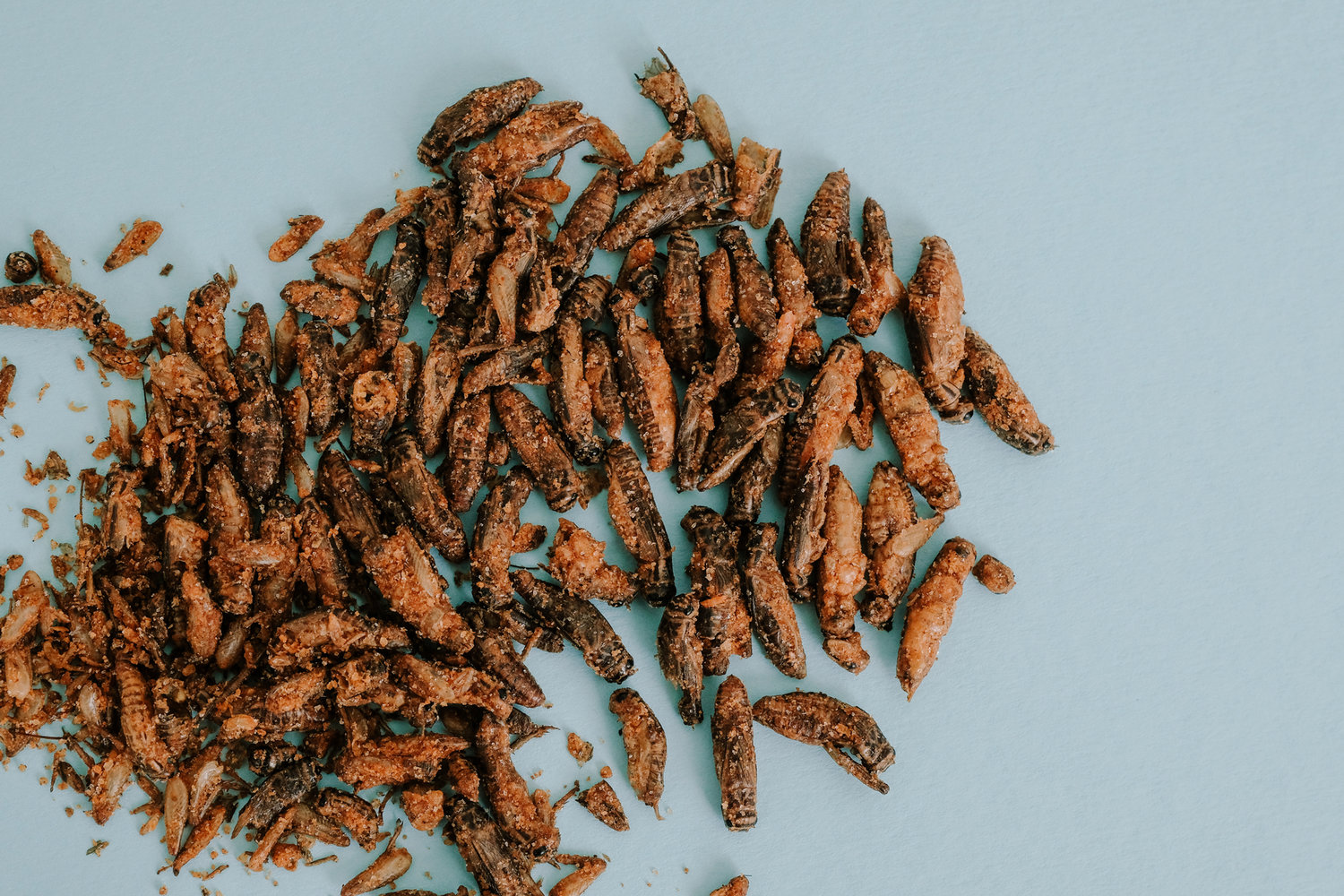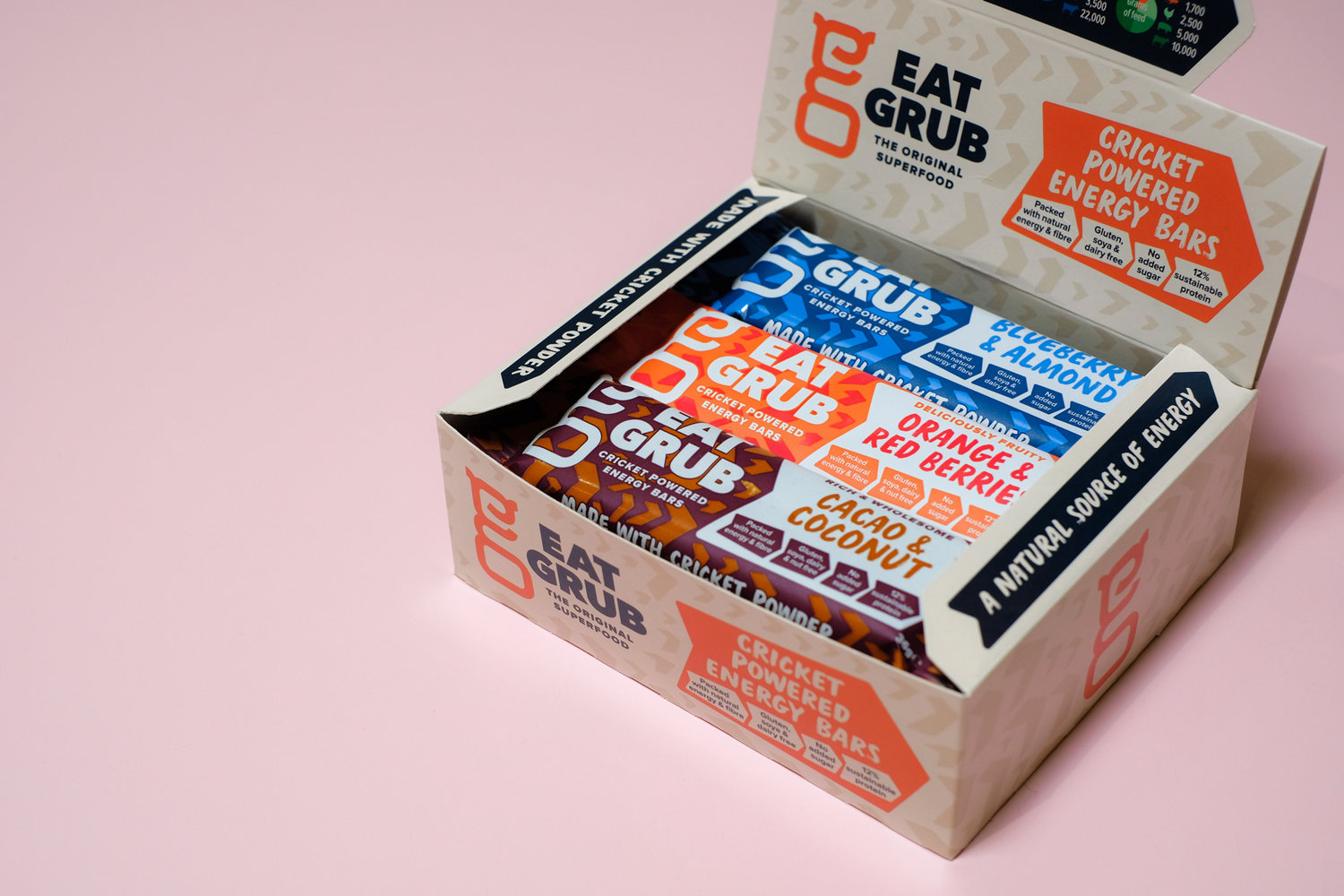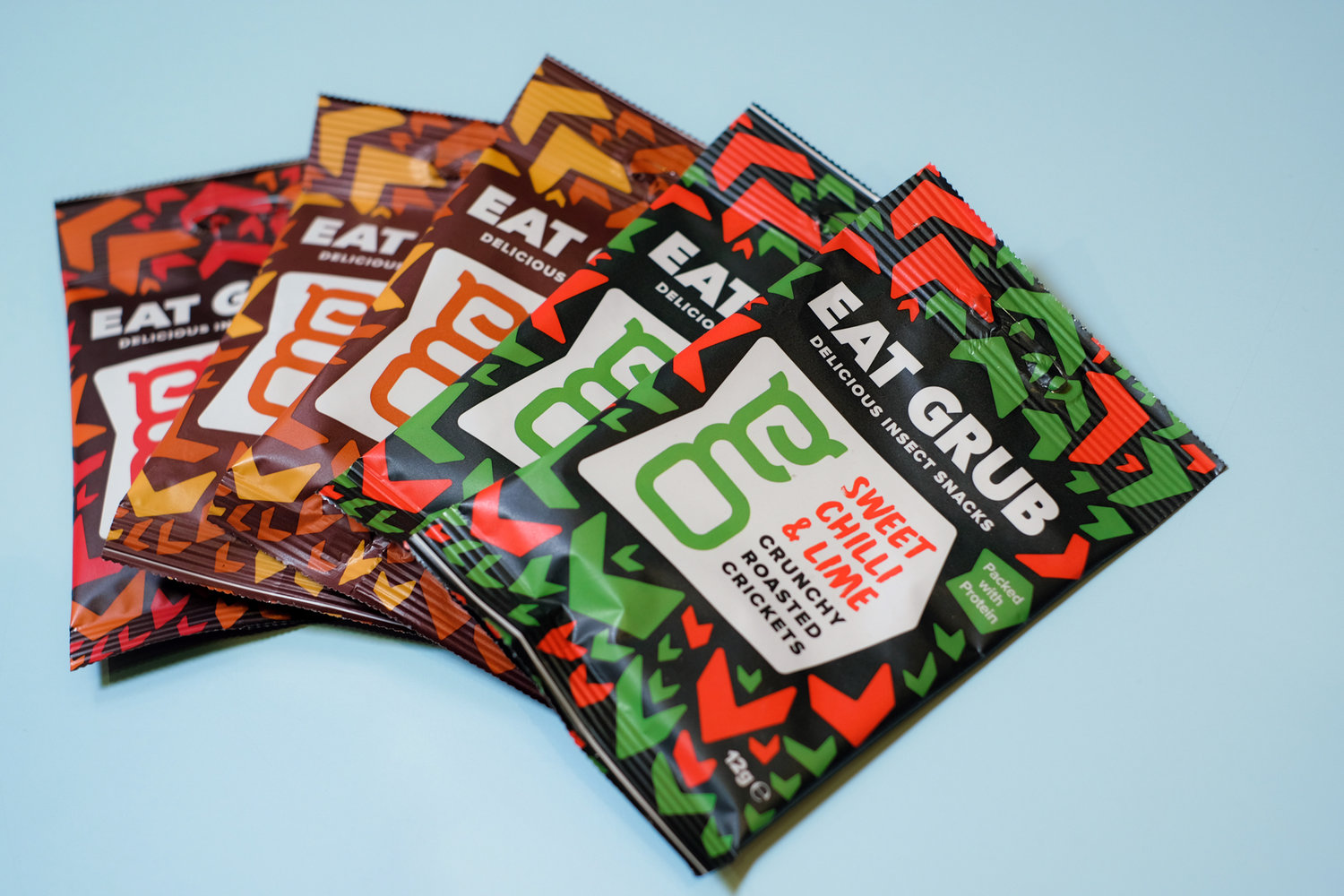The environmental benefits of eating insects are becoming well known. But is the West still resistant to the idea? And how does an insect food challenger brand approach changing consumer’s perceptions? Jude Bliss talks to Neil Whippey, the Co-founder of Eat Grub, the UK’s leading insect food brand, to hear how they are taking on the challenge of convincing a nation to switch from meat to insects to get our protein fix.
JB: Why have we in the West historically been so resistant to the idea of eating insects?
NW: I think that challenge or disgust is built into us from an early age and that’s because it’s just not in our culture. Parents tell their kids that insects aren’t food. We’re not taught to eat or cook with insects as kids so there’s no history there. I also think when you see aliens on TV or in films, the influence in terms of how they look is from the deep sea or from insects. Things like that just reinforce our fear of them.

Eat Grub’s mission is to ‘to convince the West to embrace insects as a food source.’ Why should we be eating insects?
As with any food product, taste is paramount if you’re going to have someone buy it again. But there are two great reasons for trying it in the first place, and that’s sustainability and nutrition. So, insects use far less land, feed, and water, compared to any other form of livestock to produce the same amount of protein. For instance, compared to beef protein, it’s one-twelfth the feed, one 34th of the water, and just a small fraction of the land, because it can be vertically farmed. In terms of nutrition, our crickets are over 70% protein, and that’s a complete protein, so it contains all amino acids. So, great, if you’re a bodybuilder or if you’re looking to keep fit. They’re also high in fibre and high in B12, they contain omega three and six. And recently, in small studies, they’ve been shown to be anti-inflammatory. Inflammation is linked with all kinds of ailments, including cancers, as a causation point. It feels like there’s going to be many more health claims and benefits being proven and it’s just at an early stage so there’s lots of opportunities there.
“Attention spans are short so you’ve got to be attention-grabbing.”
How are you trying to convince people to eat insects?
Our first port of call is we have to create availability and we have to educate quickly, but we also have to not make it a boring education. We have to nudge people to try the product through impulsive thinking rather than rational thinking. We push the sustainability credentials, but it’s hard to market something purely on sustainability, even though the public are interested in it. So how do we make it impulsive? It’s around fun messaging, it’s about not taking yourself too seriously and it’s around price point. Our brand is about being bold and accessible, and there’s no better way to do that than to directly lean into the things that people might be afraid of. We say ‘Delicious insect snacks’ as the top line on our crunchy roasted crickets. We’ve got a little grub moniker on the front of our packaging. And in terms of our marketing messages now, our new strapline is ‘DISGUSTING -LY GOOD’ so we’re not hiding away from what’s inside. We’re really driving in on the fear people might have. Attention spans aren’t long so you’ve got to be attention-grabbing. Thankfully, insects are, which helps.

What’s your strategy for turning someone who’s initially squeamish into a regular insect eater?
We see it in three sections of a journey. Our energy bars contain cricket powder, rather than whole insects, and are mixed with dried fruit, seeds and oats, so consumers get the benefits of insect protein without the visual element. And we’ve found that it’s a great product to change someone’s mind. The second step would be that they’d be buying whole insects, but flavoured. And once you’ve tried a bar, you’ve already eaten insects, so why not? And the third step is buying whole insects and cooking with them yourself, or adding them to smoothies. So we offer different products for people at various stages of that journey.

Are you finding that attitudes to insects are changing?
When we first started, it was something like 14% of the UK would try insects, and this figure was up to 42% in 2018, so things have changed quickly. And today, particularly with younger millennials and Gen Z, you get less and less of that squeamishness. We find now that our most popular lines are the flavoured, ready to eat whole insects. In terms of changing attitudes from within the industry, working with Sainsbury’s and its Future Brands team was pivotal. Part of their current strategy is about a point of difference and driving change in the market and they’ve been incredible at pushing a lot of exciting ideas and new ways to format things. We’ve seen a step-change since then in incoming interest in our brand and product, and the concept in general, because it’s helped drive real awareness to the area, an in turn acceptance by consumers and retailers alike.

“The younger generations have inspiring figures their own age to look up to, and that’s going to drive mass change very quickly.”
Insects have been the next ‘bug’ thing in food before. What’s different now?
I think that now, more than ever, you can put a new idea in front of consumers that, in particular, is about sustainability, and have them take note. I think most people are aware that we’ve wrecked the planet, and change is needed in many areas whether that’s making a change to reduce their beef intake. Or whether that’s making a change to eat insects as a little bit of their meal plan for the week. There are lots of different ways people get involved, and now, more than ever, the opportunity is there, and I think that’s only going to grow. Obviously, you’ve also got kids like Greta Thunberg... I don’t know what I was doing at her age! So, I think the younger generations have inspiring figures their own age to look up to, and that’s going to drive mass change very quickly. You can see it happening.
What advice would you give to someone thinking of starting a challenger brand?
I’d say naivety is a good thing. We launched an insect food-based brand, not having had any food experience. And I think if we’d have had food experience, we may not have done it. We’d have known how difficult it was going to be. We’re not just changing an ingredient in a recipe or tweaking the packaging format, which, to the food industry, is considered innovation. No, we’re trying to change a nation’s perceptions on insects as a food source and that needs buy-in through the whole chain to make it happen. To us, that’s true innovation. So, actually, we found naivety to be a good thing, because by the time we realised that this is a real challenge, we were already in too deep. I understand now why these big companies use massive amounts of data to only launch new products when they are almost certain that it’s going to work, and why retailers, historically, have been risk-averse but you don’t make change by being risk-averse.
This piece is by eatbigfish. and first appeared on The Challenger Project here



